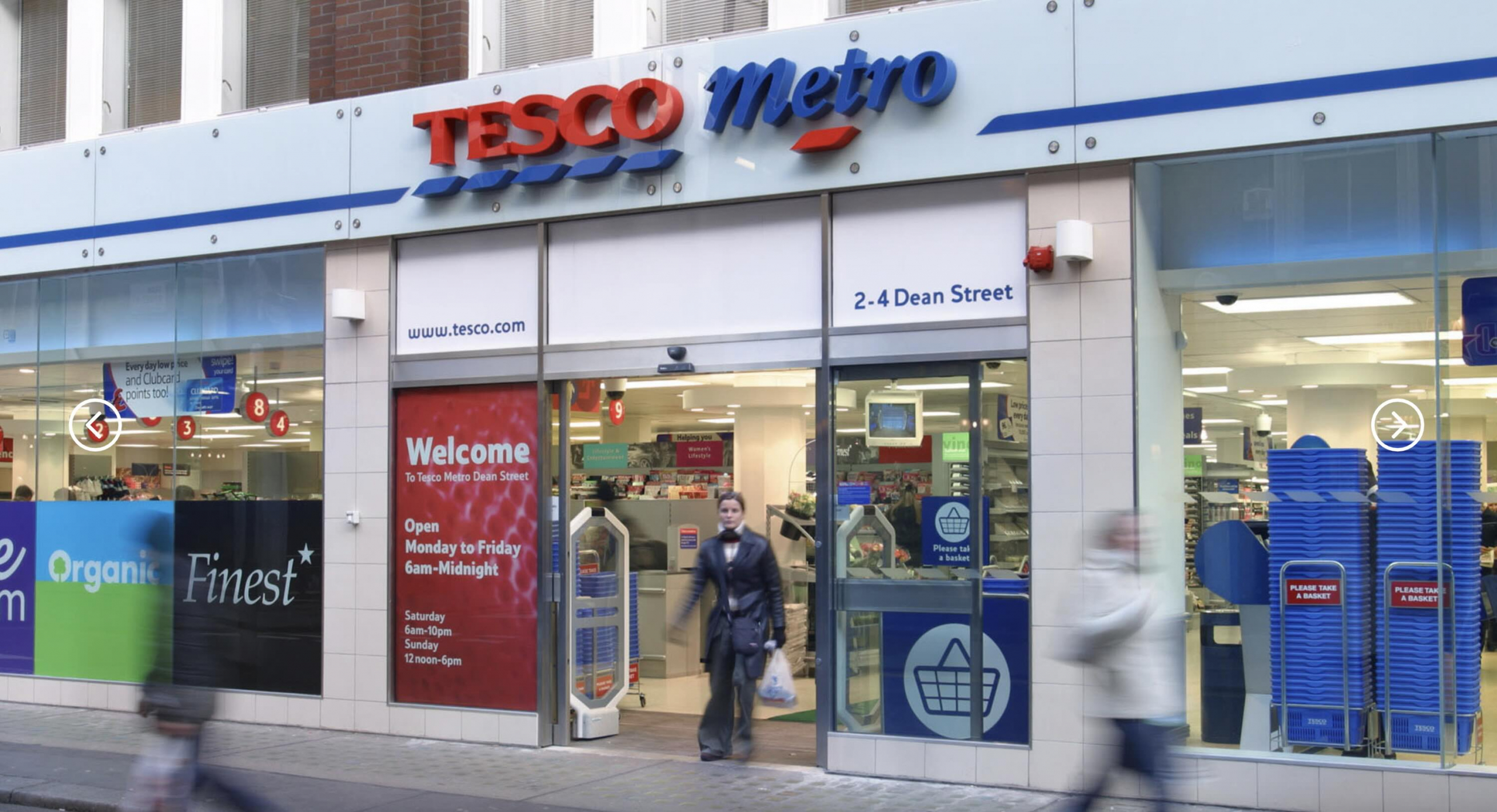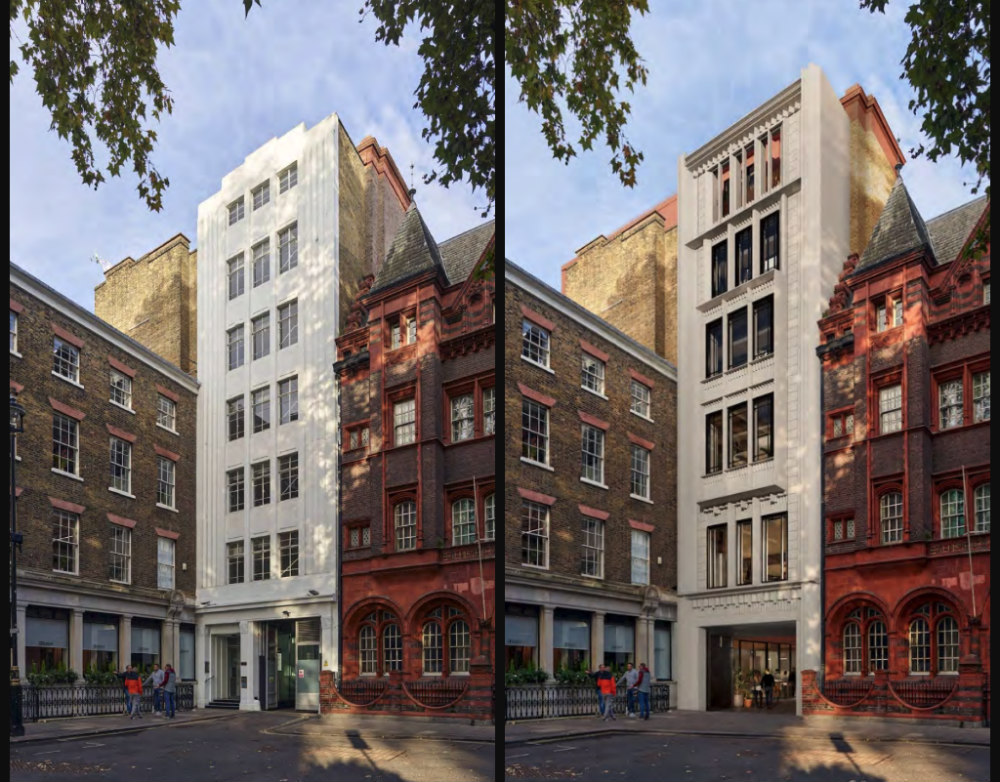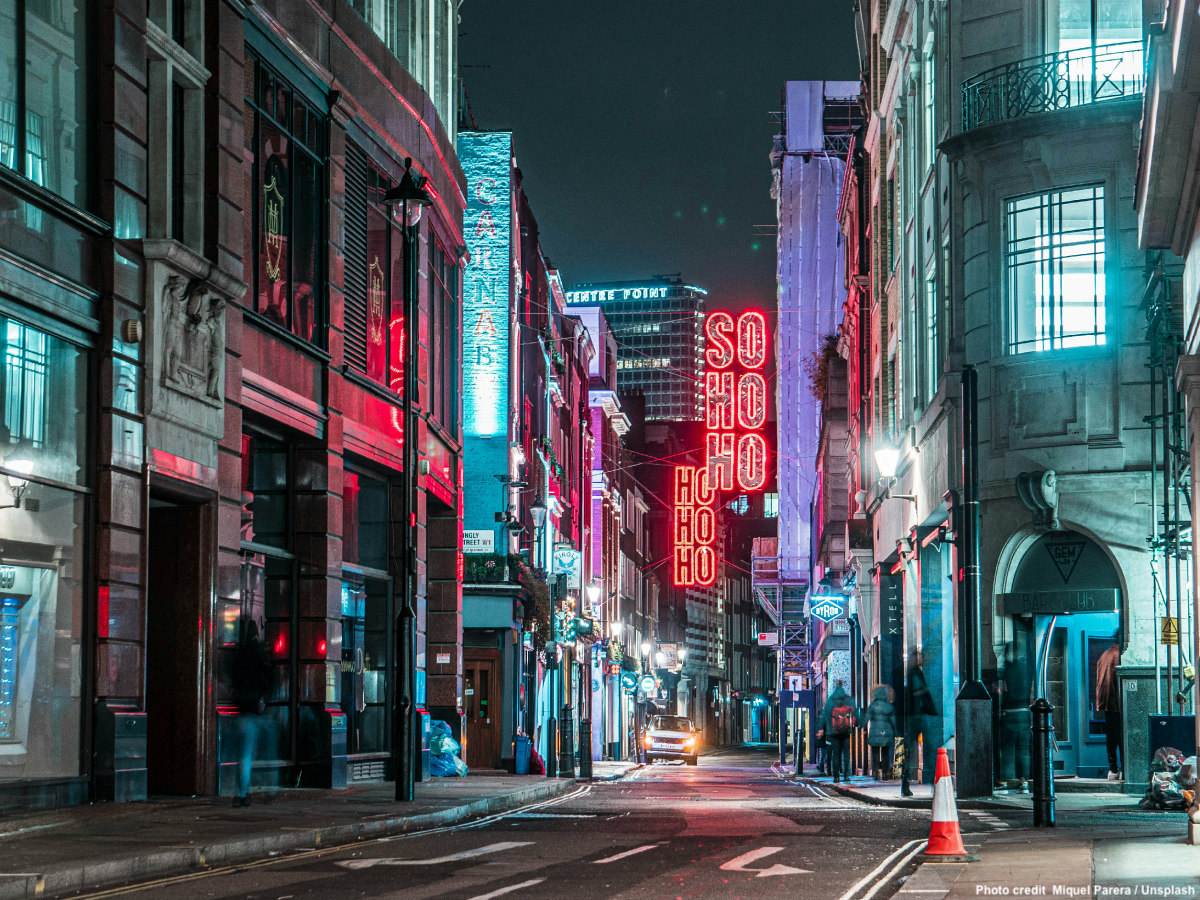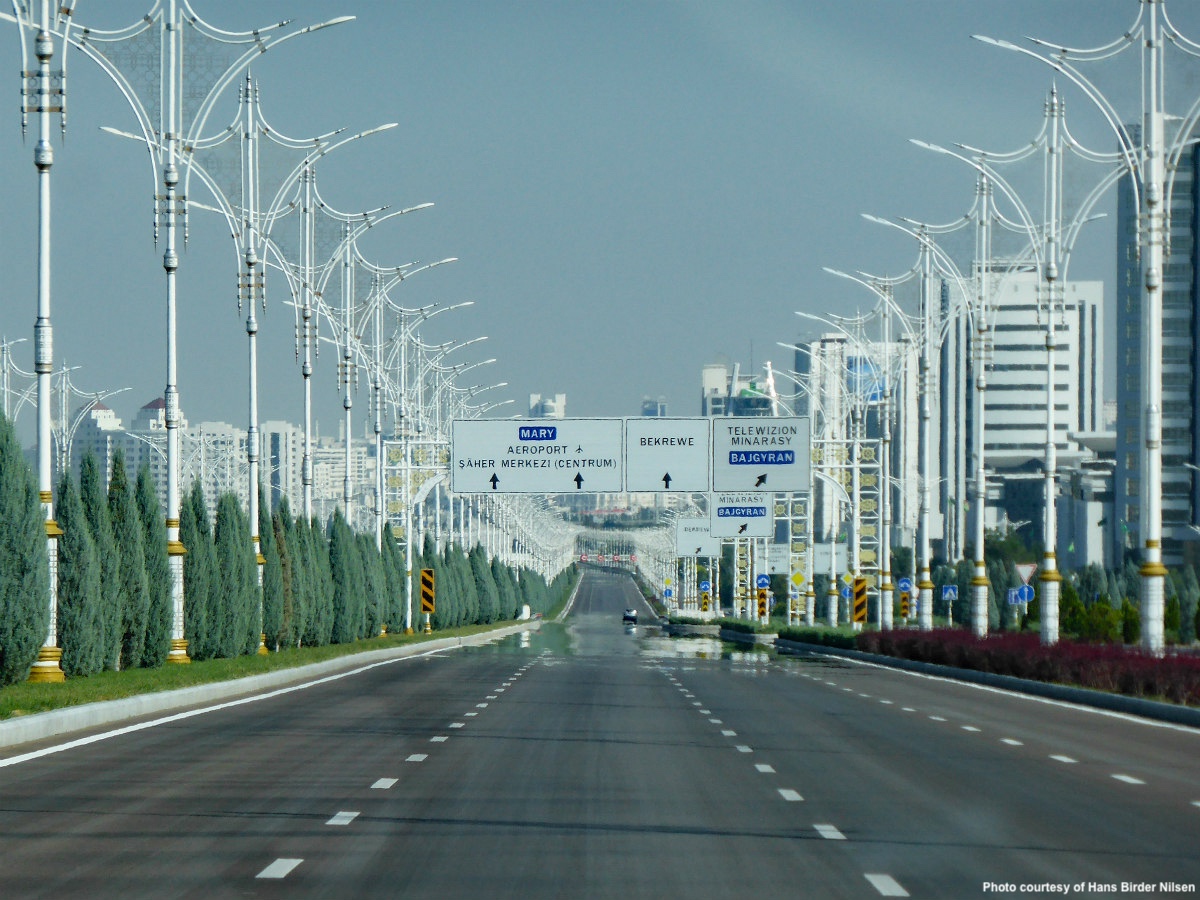“London’s louchest district is back. And it’s better than ever,” reported The Financial Times last month. It’s a weekday afternoon, and London’s Soho is packed with people sipping world-class malts in cocktail bars, drinking Guinness in old resurrected pubs or artisan coffee in houses boasting more specialty brews and dairy-free alternatives than one knew existed.
In the memory of Soho’s longtime residents, a number of commercial spaces were independent stores but now they have given way to exclusive streetwear, accessories and limited-edition sneakers. Yet, within this conspicuous consumption wonderland, getting hold of essential groceries like a standard bottle of milk can be a challenge.
Almost three years ago, Soho resident and journalist, Joy Lo Dico, wrote “The obvious wail of locals, not in need of designer sunglasses, is ‘where do I go and buy a mop and bucket?’” In London’s Soho, much like its New York counterpart, basic goods are increasingly hard to come by. Around 3,000 residents in Soho, 30% of whom are social housing tenants, cohabit with businesses in premium offices and well-off visitors to the neighbourhood. This is how the conflict of needs arises, argues Tim Lord.
He is the chairman of The Soho Society, a grassroots group that emerged in the 1970s when the neighbourhood was under threat from urban renewal plans that envisaged the demolition of much of its distinctive urban landscape. Since its inception, the Society has been a key advocate for the preservation of Soho. Recent examples include its campaign to prevent the imminent closure of its oldest traditional Italian deli (I Camisa and Son), dating back to 1929.
The latest local mainstay that The Soho Society has thrown its support behind, however, may come somewhat as a surprise: an unassuming supermarket located at 2-4 Dean Street, currently operated by none other than UK’s largest retail chain: Tesco. This supermarket giant is no stranger to controversy. While revered by many as a symbol of British business, offering value for money and fostering local economies, others decry its corporate power and dominance in urban retail landscapes, and argue its practices harm smaller competitors and independent stores, and ultimately, the identity of local communities.
One such instance of controversy unfolded in April 2011 in Bristol’s Stokes Croft area, where opposition to the opening of a new Tesco store escalated into what became known as the “Tesco riot.” Making headline news, the fierce but ultimately unsuccessful opposition – in the end Tesco was able to open its store after several years of delay – was remarkable for its intensity.
In London’s Soho, plans to replace the Tesco supermarket with an office block and smaller retail units made this chain store an unlikely champion for the community, challenging displacement narratives that frame communities and chain stores encroaching on them in perpetual conflict.

***
Two years ago, the Westminster Council received a planning application with a proposal to completely demolish a large five-story office building on Dean Street, directly across from the new Elizabeth line entrance now connected to a new underground train system that takes one to Heathrow in about 30 minutes from central London. The developer’s plans included building new premium offices with a big walkway, a foyer and some small retail units that would entirely sacrifice the big Tesco supermarket located on the ground floor of the building.
As the Tesco site leads through a passage behind Dean Street into a corner of Soho Square, the developer’s application also considered the demolition of number seven in Soho square, built in Art Deco style in 1929. The building is unlisted, but it sits in the Soho conservation area where there are more than a dozen listed buildings on that square which was built in 1670. Moreover, the design for the replacement of number seven in Soho Square clashed, explains Lord, with the French Protestant Church next door, which is a grade two-star listed building built by Aston Webb in 1890 – the same architect who built the Victoria and Albert Museum in London.
After all the objections were largely ignored by the developer, Lord says, “We lobbied the local authority, Westminster Council, to protect the supermarket, arguing that it is the only large grocery store providing Soho’s residents with a wide range of affordable food.” Ultimately, the developer’s application was turned down by the council in October of last year, and meanwhile, The Soho Society applied to have the Tesco supermarket listed as an “Asset of Community Value.”
The “Asset of Community Value” designation was introduced in England in 2011 as part of the Localism Act in a bid to give communities more control over local assets and help protect valuable community resources from being lost. According to the Act, any “building or other land” whose use “furthers the social wellbeing or social interests of the local community” can be nominated by community groups and listed as an Asset of Community Value by the local authority. Once a building or land is listed as an “Asset of Community Value,” its owner must inform the local authority if he/she wants to sell. This triggers a moratorium period of up to 6 months, during which the community group that nominated the asset has the opportunity to raise funds and bid to purchase the asset on the open market.

While no one believed this right to buy would be exercised in the case of Tesco, given the prices for commercial property in central London, Lord explains that the classification is far from insignificant: “they [the council and developer] would have to think twice before they get rid of the supermarket.”
And, Lord believes, having a Tesco categorised as Asset of Community Value could help escalate the debate about the redevelopment of the site. The big frustration for Soho’s residents is the speculative rationale of the developer, who is betting on high demand for premium offices at a time when the commercial real estate sector has been hit particularly hard by a steep drop in the value of previously prime locations. Additionally, Lord suggests, “It is absurd to think that these future tenants, these people who we don’t know, and who are going to pay a huge rent for an office off this absolutely beautiful historic square in London, they’re only to do it if they have a big foyer and lift lobby,” says Lord.
In most cases, the developer speaks for the tenants “who are not in the room” about what tenants want. “But I believe that if the tenants were present,” says Lord, “they would be very concerned about what has been done in their name.” Which means that a kind of commercial market washing is happening here, Lord suspects.
Apparently the only activity in the office market, at the moment, is at the very high end. After the pandemic, more people work from home so office spaces have to be much more appealing to encourage workers back to the office. “Ultra premium offices are still being let, whereas anything that has got low ceilings or doesn’t have the best air conditioning or best heating, even in London’s Soho, is not rented,” says Lord (although this is only based on what developers and agents say). Property owners seem to be wary of this situation, only they don’t want to admit how much the office market has changed and how they eventually may have to crystallise losses by a sale or lease below current “market” levels.
“We don’t even know whether these premium tenants are ever going to show up.” And if they show up, should they not feel responsible for any of the loss or the displacement that the re-development of that building has caused in Soho. But Lord wants tenants to be aware that their economic decision to move in, and how they would like to design their office building, has an impact in the neighbourhood because those things are diminishing the public utility of the building to reflect their wishes.
***
Last December, the Westminster Council made history by designating the Tesco supermarket as an Asset of Community Value, marking the first time a supermarket has received such recognition. The Soho Society’s advocacy for it meanwhile signals an interesting twist in urban activism amidst the global rise of (super)gentrification, tourism, displacement and elite consumption, shifting away from the all-too-familiar “David versus Goliath” style battles of communities versus chain stores and corporate dominance – as seen in Stoke Croft. But it is not unprecedented.
In Berlin’s gentrifying Kreuzberg district, for example, activists campaigned until a few years ago fiercely (and ultimately unsuccessfully) to preserve an Aldi supermarket, stressing the importance of accessible retail options in the area. And it raises interesting questions about what constitutes an Asset of Community Value and what matters for maintaining inclusive and liveable neighbourhoods.

But, for Lord, the core issue is really urban planning use and law in the UK. There’s definitely an aspect of planning policy and licensing decisions that has damaged London’s Soho. In 2020 the UK government introduced Class E building use, meaning that one no longer needs planning permission to turn a shop into a restaurant – with no reference to the council or the community and without respecting local circumstances. This change really mattered.
If you remove the planning constraints from shop to restaurant and bar, and these shops are in a very busy profitable area, everything will end up as a restaurant or bar and it completely changes the character of the area. In its first application, the developer of the building where the Tesco supermarket is located left a little bit of retail on the ground floor on Dean Street for a restaurant, they agreed to food retail after the first application was rejected.
“The planning system is increasingly ignoring local concerns,” says Lord, and therefore, London’s Soho, much like its New York counterpart, has lost much of its nonconformist allure. Once a cultural hub renowned for its bohemian vibe and diverse social fabric, the Soho neighbourhood has in recent years suffered a steady loss of long-established cultural venues and the displacement of small independent businesses, as has happened in other parts of London. While the strip clubs and sex shops the neighbourhood was once (in)famous for have also almost entirely disappeared, so too have many establishments that historically served as sanctuaries for the LGBTQ+ community been priced out, giving way to mainstream bars and restaurants.
Much of what happened in London’s Soho bears resemblance to what Sharon Zukin, a US-American sociologist renowned for her work on the role of consumption and commodification in processes of urban change, has dubbed “domestication by cappuccino.” She has traced the transformation of neighbourhoods in New York, including the Big Apple’s very own SoHo district. Her analysis shows how the influx of swanky cafés, restaurants and boutiques catering to the affluent changes urban environments fuels the gentrification and commercialisation of once gritty areas. And ultimately, this process morphs these areas into upscale consumer havens where global brands dominate and interchangeability reigns.
The same happens with the growing ubiquity and expansion of chain stores within urban retail environments that has been a topic of ongoing debate for decades, and has made the fight for the Tesco supermarket so unusual.
As early as 2004, a British think tank issued a stark warning about “swathes of identikit chain stores that seem to spread like economic weeds,” turning the country into a “nation of clone towns,” while praising “community groups (…) bravely resisting the onslaught of the clones.” In response to these concerns, recent years have seen numerous cities stepping up efforts to counter the “clone town” effect, protecting locally owned businesses, and preserving the distinct character and charm of their communities. These efforts take various forms, from implementing zoning regulations that limit the concentration of chain stores in specific areas to offering financial incentives and support programmes for locally owned businesses.

“These measures don’t maximise rental yields, but it does create community because you retain services for the locals as part of your planning system,” says Lord. And he adds, “If the laws or the urban planning are not working, then what we want is a localised decision making.”
Right now The Soho Society is in the process of looking at the second application by the Dean Street developer, talking to residents, and commenting back to the council and the developer. “They have agreed that there will be some form of supermarket but we’re very worried because they haven’t fully protected the supermarket use – it’s about two-thirds of the current size with insufficient storage space,” says Lord. Also, the proposed new frontage for the replacement building on Soho Square is more bulky and ugly than the existing 1929 building.
“What cities are experiencing is a financialization of the property sector,” Lord says. Right now there is an enormous industry in the UK, which is just about getting planning permission. “I mean, thousands of people work in it. And by the way, all of it is about lobbying council decision makers and sometimes not in a good way,” he says. This is because the value uplift on grant of permission can be large and mainly accrues to the freeholder.
In the previous Conservative administration in our council, two representatives resigned and claimed that the council had been taken over by the property industry. The property industry was allegedly putting their people on selection committees. So when neighbour groups talk to council officers, the council officers are always talking about rental yields, “but that isn’t a benefit for the council, or the people who live in the neighbourhood; it’s a benefit for the investor, for the owner of the property” – an owner who may not even be in the UK because the scale of the money that’s involved in buying commercial property in London and the market is a global one.
“Property investors have been brought in from everywhere because they look at London’s Soho, and see this massive opportunity to speculate, and make profits on buying commercial property; then all these small business operators are dependent on whether their landlord would support them- in the pandemic for example,” says Lord. Ultimately, neighbourhoods lose the local operating businesses that have heritage and interest because councils are protecting commercial property investors, on the basis that somehow the foreign direct investment and the commercial value of the property will trickle down in other beneficial ways to the economy. And Lord asks, “Well, can you tell us how?”
This article has been co-authored with Susana F. Molina




